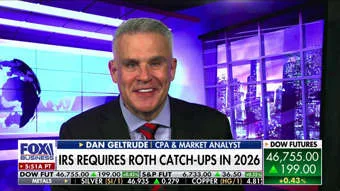Key Points:
- A new provision in the Secure Act 2.0 mandates that catch-up retirement contributions for high earners must be made on a post-tax (Roth) basis.
- This change affects individuals aged 50 and over who earned more than $145,000 in the previous year.
- Critics, like CPA Dan Geltrude, are calling this a “hidden tax hike” because it eliminates the immediate tax deduction on these contributions.
- The rule reduces flexibility for retirement savers, forcing them into a specific tax strategy and increasing their current tax liability.
A significant change tucked into the Secure Act 2.0 is sending waves of concern through high-earning Americans planning for retirement. A new provision, which is being labeled a “hidden tax hike” by financial experts, alters how individuals aged 50 and over can make their “catch-up” contributions, drastically reducing their flexibility and increasing their current tax bills.
The New Mandate for High Earners
Speaking on the program ‘Mornings with Maria,’ CPA and market analyst Dan Geltrude broke down the controversial new rule. Previously, savers aged 50 and older could make additional pre-tax contributions to their 401(k)s, known as catch-up contributions. This allowed them to boost their retirement savings while simultaneously lowering their taxable income for the year.
However, under the new Secure Act 2.0 guidelines, this has changed for a specific group of earners. Individuals who earned $145,000 or more in the preceding calendar year are now mandated to make these catch-up contributions to a Roth 401(k) account. This means the contributions are made with after-tax dollars.
Why is it Being Called a ‘Hidden Tax Hike’?
According to Geltrude, the forced shift to Roth contributions for this demographic is effectively a tax increase in disguise. By eliminating the option for pre-tax catch-up contributions, the government is taking away a valuable tax deduction for high earners during their peak earning years.
“It’s a way of the government getting their hands on tax dollars now versus later,” Geltrude explained. When a contribution is made pre-tax to a traditional 401(k), the saver gets an immediate tax break, and the government collects taxes when the money is withdrawn in retirement. By forcing high earners to use a Roth vehicle for these extra savings, the government ensures it collects that tax revenue immediately, thereby increasing the saver’s current tax liability.
Loss of Flexibility and Financial Planning
Beyond the immediate financial hit, Geltrude emphasized that the rule “slashes flexibility” for diligent savers. Financial planning often involves a strategic mix of pre-tax and post-tax retirement contributions based on an individual’s expected income now versus in retirement. Many high earners are in their highest tax bracket during their 50s and would prefer to take the tax deduction now. This new rule removes that choice entirely for catch-up contributions.
This forces savers into a single strategy—paying taxes now—regardless of whether it aligns with their long-term financial plan. It penalizes a group of individuals who are actively trying to bolster their retirement funds as they approach their golden years.
Who is Impacted?
The rule specifically targets a demographic that is often working the hardest to maximize their retirement savings before they stop working. To be clear, the provision applies to retirement plan participants who are at least 50 years old and whose wages from their employer in the previous year exceeded $145,000. This threshold is indexed to inflation, so it is expected to rise in the future.
While the overall goal of the Secure Act 2.0 was to help Americans save more for retirement, this particular provision has been met with criticism. It is seen as a move by the government to increase short-term tax revenue at the expense of the long-term planning and flexibility of some of the nation’s most dedicated retirement savers. As this rule comes into effect, affected individuals are strongly encouraged to consult with their financial advisors to understand the impact on their tax situation and adjust their savings strategy accordingly.
Image Referance: https://www.msn.com/en-us/money/news/hidden-tax-hike-new-retirement-rule-hits-americans-earning-145k-and-up/vi-AA1NwpAY


